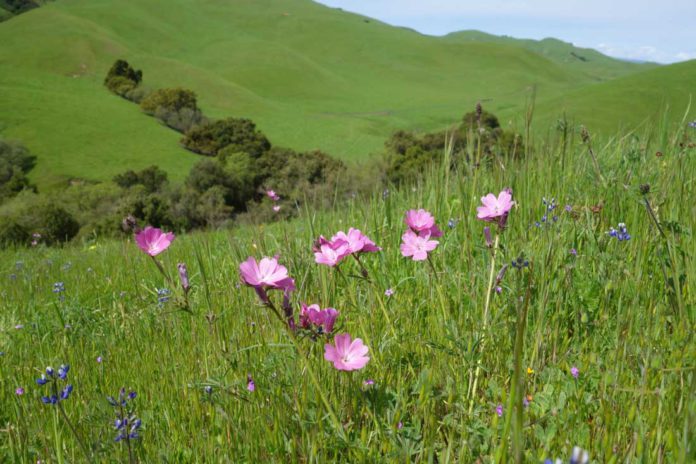
The Amah Mutsun Land Trust this week announced that by the end of 2025, it will acquire a 50-acre property near the intersection of Highways 129 and 101 in San Juan Bautista—marking the first time the Amah Mutsun Tribal Band has regained full access rights to land in its traditional territory since their forced removal more than 225 years ago, the trust said in a press release.
The land trust said the acquisition is a “powerful step” in the organization’s 10-year history. The purchase was made possible through a partnership with numerous regional land trusts and conservation organizations.
“This moment is transformational,” said AMLT Executive Director Noelle Chambers. “We at AMLT are proud to join the broader Indigenous community in the critical work of ancestral land return.
“The first decade of the organization was focused on building partnerships while re-learning and re-engaging Indigenous stewardship practices. After building our organizational capacity, we are positioned to move into the next phase of AMLT—acquiring lands for long-term Tribal stewardship.”
The land, renamed tooromakma hinse nii, is part of the greater Juristac landscape, a critical cultural and sacred space for the Amah Mutsun Tribal Band, says the press release. The name, pronounced “toe row mock ma hēēn say knee,” means “bobcats wander here” and honors the tribe’s bobcat relatives who inhabit the northern San Benito County landscape.
“Our ancestors lived on these lands for thousands of years and hundreds of generations,” Amah Mutsun Tribal Band Chairman Valentin Lopez said. “Through colonization, they were forced to endure slavery and abuse, and to forsake our traditional culture and spirituality. Today, we are realizing the enormous efforts of the Amah Mutsun people and our partners in restoring our traditional ways and our return to our traditional Tribal territory.”
The Amah Mutsun community has been working for years to protect the broader Juristac landscape through the “Protect Juristac” campaign, the land trust said. The acquisition of these 50 acres is the first important step in what the tribe hopes will be continued success in the protection and restoration of Juristac.
The property is part of a critical wildlife corridor with access to the headwaters of the Pajaro River. While it is a relatively small property, it provides an important safe passage for wildlife from the Santa Cruz Mountains to the Gabilan Range in the south and the Diablo Range in the east, says the press release.
“The Amah Mutsun people believe that it is our responsibility to care for our plant, two-legged and four-legged relatives until the last sunrise,” Lopez added. “We believe in passing down our knowledge and teaching the next generation to honor that sacred responsibility.
“This property acquisition reaffirms our commitment to cultural revitalization (and) ecological healing, and is representative of the enduring resilience of the Amah Mutsun people.”
The acquisition of the land was facilitated through partnerships with Community Foundation Santa Cruz County and Trust for Public Land (TPL), with additional support from Wildlife Conservation Network (WCN), Peninsula Open Space Trust (POST) and Land Trust of Santa Cruz County.
“The Community Foundation has been working to build our partnership with AMLT and TPL and to foster a deepening relationship between the organizations as we work together to preserve land prioritized for both conservation and ancestral cultural values,” said Susan True, CEO of Community Foundation Santa Cruz County and AMLT board member. “The 50-acre parcel of land had been on the market for a long time at a high price and was well above the appraised value.
“Due to the Community Foundation’s flexible structure, we were able to work with TPL to raise the funds and purchase the land, and we are honored to transfer this land to AMLT for long-term stewardship.”
The land trust noted that land acquisition and ownership are not Indigenous concepts. The Amah Mutsun Tribal Band does not believe they own the land in their ancestral territory, but that the land is their creator’s and that tribe members have a sacred responsibility to steward it. Through ownership of this land by AMLT, the tribe will have long-term security in the ability to access, steward, gather, harvest from and pray on the land, says the press release.












